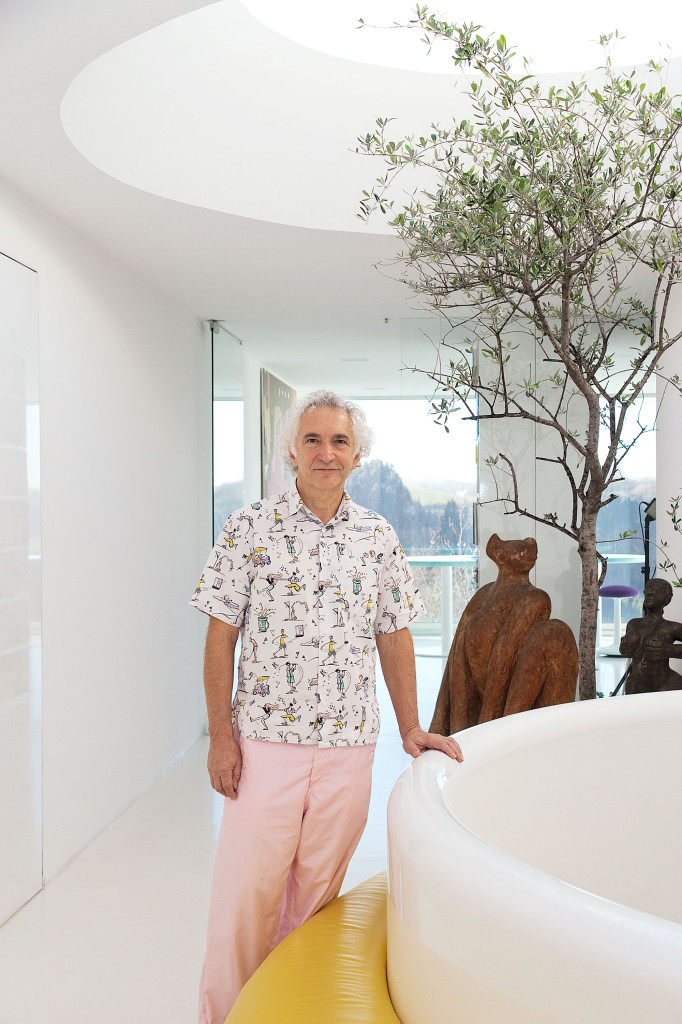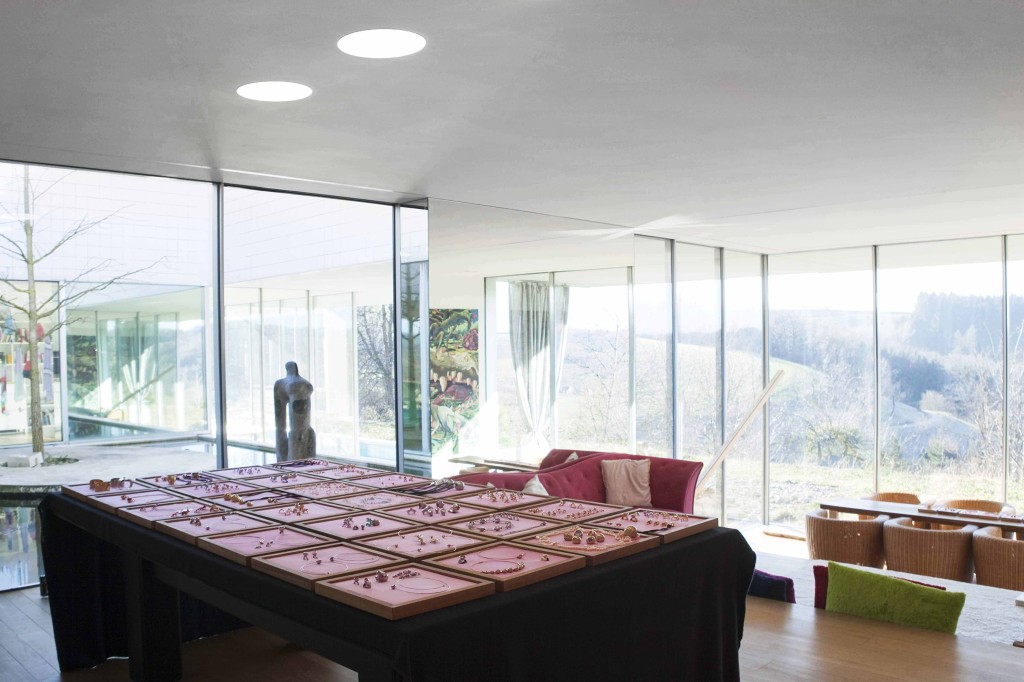In 1983, after working for eleven years as a product designer, Georg Spreng dreamed of living in the South Seas. While on vacation in Canada, however, this co-founder of the renowned frogdesign atelier and his young family fell in love with a three-square-kilometer property with a cabin on a lake. They bought the plot and moved out there, and a new life began for Spreng – as well as the transformation from a dropout to a jewelry designer. Spreng, born in 1949 in Schwäbisch Gmünd, owes his success to the fact that his legendary pieces, such as the Ice Cone Rings, Vulcano Brooches, or his Blub series, were more audacious, original and humorous than any other gold or platinum jewelry complemented with colored gemstones available on the market back then.
One day, in the midst of Canada’s pristine nature, and prompted by nothing but the desire to design something, Spreng crafted a neck hoop from a piece of wood. At some point, he also dug out the two small gold bars, which he had buried under his cabin “just to be on the safe side”, and used an ordinary hammer, as well as an axe as an anvil, to forge the fine gold to form a wide neck hoop. “You’re not exactly the same person any more after you’ve put on such an unusual piece of jewelry,” Spreng remembers. Today, this archaic neck hoop serves as evidence of his fresh start, and is not for sale.
Originally, Spreng believed that one can only make jewelry for oneself – or at the most for somebody one knows very well. But he was curious to know what other people would say about his pieces: “I wanted to find out how they would be received on the market.” This curiosity inevitably brought him and his family back to Germany. Spreng, who refers to himself as a “colorful sort of guy”, presented his creations at trade fairs and exhibitions – dressed not in black or gray, as was customary for designers back then, but in boldly colorful garments that he designed for himself and all his employees.
What remains to be answered is the question about what he and his family had been searching for back in 1983 in the solitude of Canada’s wilderness. “We wanted to limit ourselves to the bare necessities of life and discover the simplest, but also the most beautiful things around. On this principle, his family cultivated a garden, built a house, ground grain and baked bread, crafted furniture and sewed their own clothes. Spreng also started to paint and to create jewelry. This was motivated in part by his desire for self-fulfillment, as he explains today.
It was inevitable that, while studying design at Schwäbisch Gmünd’s University of Applied Sciences, Spreng was confronted with the ideals that were developed at the Ulm School of Design and subsequently taught at all German design academies. When asked whether the yearning for what’s simple and necessary, which he was searching for in the remote Canadian wilderness, is not in contradiction with jewelry, Spreng says that at Ulm’s School of Design, people had believed in a utopia that has been overtaken by reality. “Nowadays, product design is very rarely about social relevance and usefulness. Many designers have to surrender to sheer profit-seeking – sometimes under the guise of technological progress,” he explains. He hopes that this “always-bigger-faster-farther” mindset will soon be replaced by a focus on ecologically compatible and substantial products that satisfy genuine, deeply rooted emotions. “Pieces of jewelry are counted among the most important artifacts that have survived from past cultures,” he says. “The small lion man sculpture, carved from mammoth ivory and found in the Hohlenstein-Stadel cave in the Swabian Jura, gives us an idea of what inspired the people of the Stone Age 35,000 years ago,” he comments and adds that the same applies to the jewelry created by the Celts or Estruscans. According to him, jewelry created in line with his and other modern goldsmiths’ understanding of jewelry is part of mankind’s substantive cultural assets.
This is what inspires him to create jewelry with a lot of passion and “an enthusiasm for the most beautiful gemstones that verges on insanity.” He can also relate very well with radical artistic concepts. “Art jewelry that has been created with a person’s heart and soul may as well be pretty freaky,” he says. “But if you want to find a buyer for your creations, somebody who would like to associate very personal emotions with a piece, it has to provide the scope for that – the scope for being interpreted individually and correlated with the wearer’s emotions. This also requires a certain amount of humility of the designer.”
Text Reinhold Ludwig
Photos Janusch Tschech
English translation Sabine Goodman
Georg Spreng’s Homepage
First published in Art Aurea 1–2014



